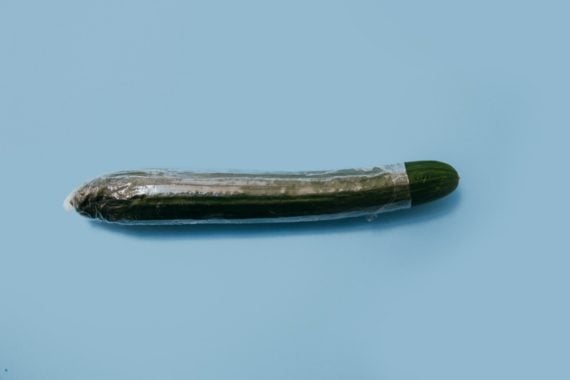How To Have Safe Sex
This is a Guide on How To Practice Safe Sex:
There are many ways to have safer sex. Learn about these ways to avoid STDs, plus information comparing condom and lube types!
How to have safe sex and how to have safe anal sex:
- Get STD tested together. Getting tested with a new partner for all STDs prior to engaging in sexual activity with them will help you both avoid giving or getting STDs that you may not have realized you or they have.
- Get vaccinated for the viruses that have immunizations prior to engaging in sexual activity.
-
- Human Papillomavirus (HPV) has more than 100 strains, some of which can cause cervical cancer in women or oropharyngeal cancer in both men and women. Some strains are preventable by a series of vaccinations.
- Hepatitis A is typically contracted from contaminated food or water, but can be contracted from oro-anal sex. This virus is 100 percent preventable by vaccine.
- Hepatitis B can also be prevented via immunization completed prior to exposure to the virus.
- Knowing your partner prior to having sex with them can help decrease your risk of contracting an STD. You are more likely to have talked to a sex partner you know about STDs prior to sex. Those who do not know their partners are more likely to engage in riskier activities like unprotected sex or engaging in sexual activity while under the influence of drugs or alcohol– for example: a one-night stand.
- Staying sober can help you avoid STDs. Being drunk or under the influence of drugs can inhibit your decision-making skills, making it more likely that you would engage in sexual activity with someone you do not know or have unprotected sex.
- Limiting your sexual partners is a smart choice for safer sex. Limiting your partners to only one person that you have sex with who only has sex with you decreases the risk of contracting an STD, especially if you have gone to get STD tested together first. Multiple sex partners means more exposure to potentially contracting an STD.
- Do not share sex toys. Sex toys that were not properly cleaned can be the source of trichomoniasis, gonorrhea, chlamydia, syphilis and herpes. If any blood is on the sex toy, HIV and hepatitis B and C can potentially be contracted from it.
- If you are in a relationship with a partner who has HIV, pre-exposure prophylaxis (PrEP) is essential to helping you not contract the virus. Your partner needs to be adamantly following antiretroviral therapy (ART).
- Use a latex or polyurethane condom or dental/sex dam every time you engage in vaginal, anal or oral sex.
How to Have Safe Unprotected Sex:
The only way for this to happen is when you are in a mutually monogamous relationship and you get tested together. When there is a level of established trust, transparency, and exclusivity it limits the risk of contracting an STD to almost nothing.
If you are seeing multiple partners at the same time, then you will need to always wear protection and go for regular STD screenings.
How to have safe anal sex without a condom:
The same rules as above still apply. In fact, it is a riskier form of sex since the lining of the rectum is so thin. That’s why HIV is contracted more commonly this way.
How to have safe gay sex:
Again, apply all of the above rules. Whether you’re straight, gay or identify as something else, you’re still human. You’re still vulnerable to disease, bacteria, and viruses.
Condoms
How to Have Safe Sex With Herpes:
Condoms act as a barrier between the penis and protect against bacteria and viruses. Although some STDs, like herpes and HPV, can be transmitted from areas not covered by a condom, it is still safer to use a condom.
There are many types of condoms available, all of which should be used accordingly:
- Never use the same condom more than once.
- Never use an expired condom.
- Male condoms should only be put on a partially or fully erected penis. Be sure to smooth out any trapped air bubbles, as they can cause the condom to break.
- Never use more than one condom at a time; using two condoms at the same time will cause friction and can result in both of them ripping or tearing. (This includes using a male and female condom at the same time.)
- Never open a condom package with your teeth to avoid ripping tiny holes in the condom. Use caution as to not accidentally tear it with your fingernails, too.
- Never use an oil-based lubricant with a latex or polyisoprene condom, it will cause them to break down.
- Do not store condoms in a hot place. Heat can damage latex, so do not keep your condoms in a hot place like a wallet, car glove box or console.
- If switching between types of intercourse, replace the condom with a new one. For example, do not switch between vaginal intercourse and anal intercourse without first discarding the condom and putting on a new one.
How to have safe sex by using condoms
Types of Condoms:
Latex condoms
- Made of latex (rubber).
- Some people are allergic to latex.
- Slightly thicker than polyurethane condoms, considered to be slightly more resilient.
- Cannot be used with oil-based lubricants (use water-based or silicon-based).
- Most widely available condom option, and often the least expensive.
Polyurethane condoms
- Made of thin plastic.
- Can be used if you or your partner has a latex allergy.
- More expensive than latex condoms.
- Compared to latex, polyurethane condoms are thinner and tend to have a less constricting fit.
Polyisoprene condoms
- Polyisoprene is chemically the same type of rubber as latex, but synthetic polyisoprene condoms should not contain the natural proteins which are the source of most people’s latex allergies.
- Can be used if partner is allergic to latex or polyurethane.
- Natural feel that conforms to the skin similarly to latex.
- Typically costs less than polyurethane and slightly more than latex condoms.
- Cannot be used with oil-based lubricants (use water-based or silicon-based).
Natural condoms
- Typically made of animal membranes (like lambskin).
- Not safe for preventing STDs, since they have small pores that can allow bacteria and viruses to slip through.
- These pores are too small to allow sperm to pass through.
- More expensive than most condoms.
Female condoms
- A lubricated polyurethane tube that has a flexible ring at each end, and an opening on one end.
- The closed end of the tube covers the cervix, and the other end slightly covers the labia (lips on the outside of the vagina). The condom blocks sperm from entering the womb.
- Female condoms should be discarded after one use.
- Not as effective at preventing STDs as the male condoms because they do not cover nearly as much of the genital area.
- Cannot be used together with a male condom, as the friction could cause one or both to break.
Dental Dams 
How To Have Safe Oral Sex:
A dental dam or a sex dam is a patch of latex, polyurethane or polyethylene used during oral stimulation or oral sex as a barrier between one’s mouth and their partner’s genital area or anus. They prevent the spread of STDs when used correctly.
Lubricants 
Lubricant (lube) aids in preventing friction that can cause condoms to break.
Oil-Based Lube
- Avoid oil-based lubricants if you can.
- They are not safe for use with latex or polyisoprene condoms.
- They can clog pores, thereby acting as a breeding ground for bacteria and viruses.
- Oil stains can ruin bedding or clothing.
- Oil is much more difficult to clean off of sex toys (and people!).
Water-Based Lube
- Needs to be reapplied more often than silicone-based lube.
- Safe for all types of condoms and safe on silicone sex toys.
- Easy to clean up after.
Silicone-Based Lube
- Safe to use with all types of condoms.
- Silicone lube is not safe to use with silicone sex toys, it can cause them to break down.
- Typically needs to be reapplied less often than water-based lube.
- More effective in a water setting than water-based lube (shower, hot tub, pool, etc.).
For more information on how to have safe sex or if you decide to get tested for STDs, check out stdcheck.com for the latest resources and testing options
Medically Reviewed by J. Frank Martin JR., MD on May 5, 2022
Secure and Confidential
STD testing services
The fastest results possbile - available in 1 to 2 days

Tagged
Categorized As
Author: Nick Corlis
Nick Corlis is a writer, marketer, and designer. He graduated from Texas State University in San Marcos, Texas, with a degree in Digital Communications. Nick is proud to be able to help eliminate the stigma of STD testing through his writing and is always trying to advocate the importance of your sexual health. Before STDcheck, his favorite way to develop his writing skills was by accepting various writing jobs in college and maintaining multiple blogs. Nick wears many hats here at STDcheck, but specifically enjoys writing accurate, well-researched content that is not only informative and relatable but sometimes also contains memes. When not writing, Nick likes to race cars and go-karts, eat Japanese food, and play games on his computer.





